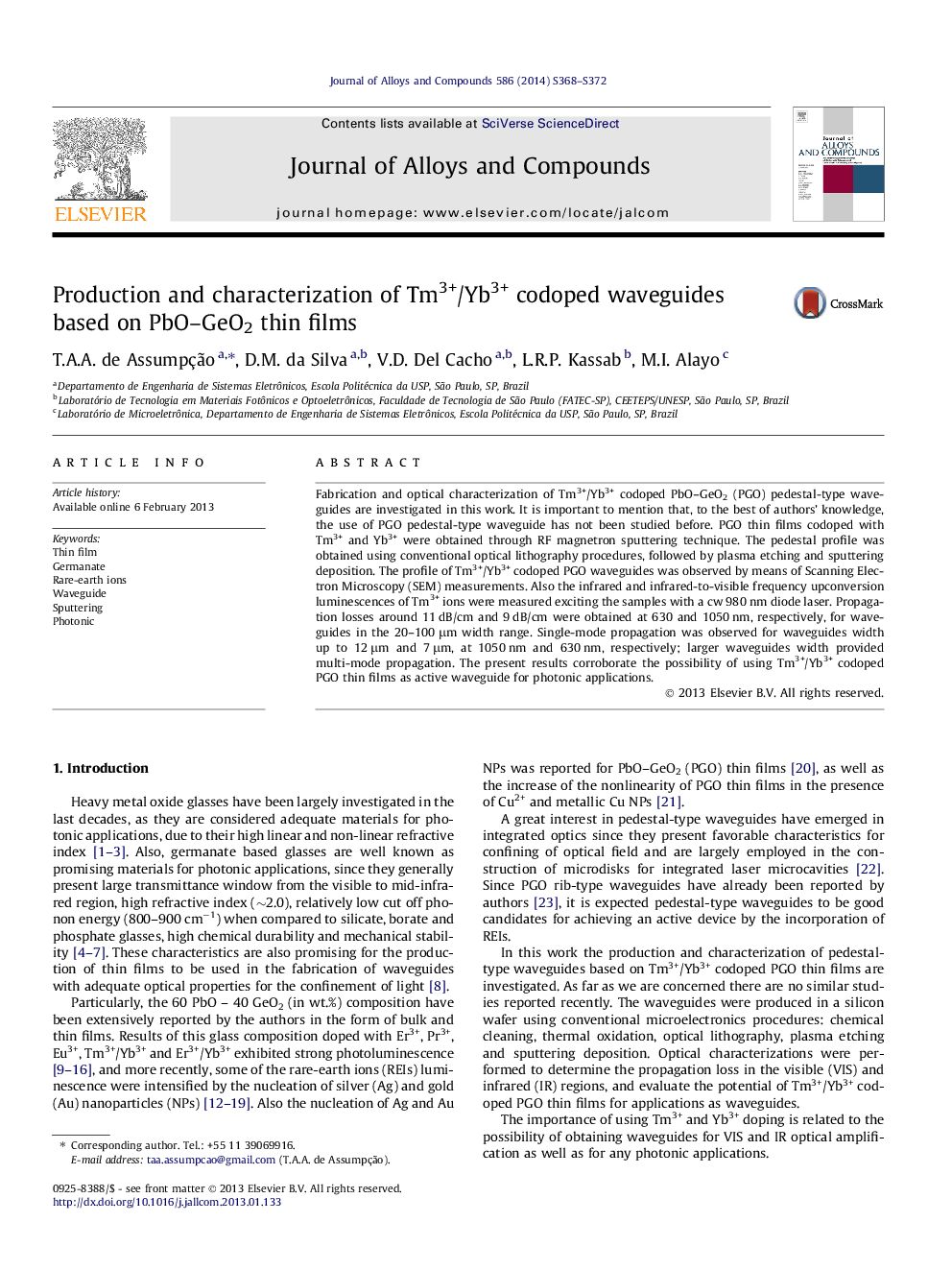| Article ID | Journal | Published Year | Pages | File Type |
|---|---|---|---|---|
| 1612570 | Journal of Alloys and Compounds | 2014 | 5 Pages |
Fabrication and optical characterization of Tm3+/Yb3+ codoped PbO–GeO2 (PGO) pedestal-type waveguides are investigated in this work. It is important to mention that, to the best of authors’ knowledge, the use of PGO pedestal-type waveguide has not been studied before. PGO thin films codoped with Tm3+ and Yb3+ were obtained through RF magnetron sputtering technique. The pedestal profile was obtained using conventional optical lithography procedures, followed by plasma etching and sputtering deposition. The profile of Tm3+/Yb3+ codoped PGO waveguides was observed by means of Scanning Electron Microscopy (SEM) measurements. Also the infrared and infrared-to-visible frequency upconversion luminescences of Tm3+ ions were measured exciting the samples with a cw 980 nm diode laser. Propagation losses around 11 dB/cm and 9 dB/cm were obtained at 630 and 1050 nm, respectively, for waveguides in the 20–100 μm width range. Single-mode propagation was observed for waveguides width up to 12 μm and 7 μm, at 1050 nm and 630 nm, respectively; larger waveguides width provided multi-mode propagation. The present results corroborate the possibility of using Tm3+/Yb3+ codoped PGO thin films as active waveguide for photonic applications.
► Production of Tm3+/Yb3+ codoped PbO–GeO2 pedestal-type waveguides is described. ► Optical propagation losses around 10 dB/cm were measured at 630–1050 nm. ► The photoluminescence of Tm3+ confirmed the rare-earths ions incorporation. ► Near field profiles of waveguides enabled the determination of mode propagations. ► Possibility of using Tm3+/Yb3+ codoped PGO thin films as active waveguides.
